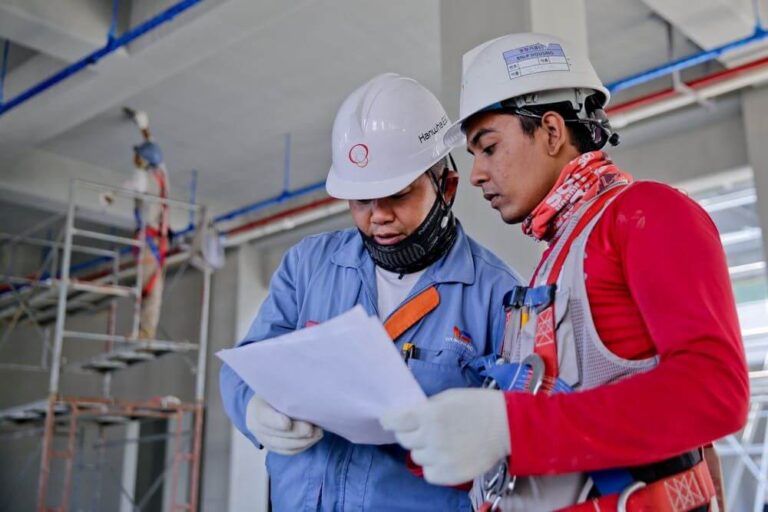Construction sites are bustling environments where workers are often exposed to various hazards. Ensuring workplace safety is not just a regulatory requirement; it protects employees, minimizes financial losses, and boosts company morale. While risks are inherent in construction, proactive safety measures can significantly reduce the likelihood of injuries. This article discusses essential safety measures that can help prevent construction injuries, including regular training, proper equipment, and health monitoring.
Regular Safety Training and Awareness Programs
Education plays a pivotal role in promoting safety on construction sites. Continual training refreshers ensure that workers remain sensitive to the risks associated with their specific tasks. By incorporating hands-on assessments along with theoretical instruction, workers can better understand safety protocols and emergency responses. Companies that invest in comprehensive safety training can see a marked decline in workplace incidents.
These training sessions must include instruction on the use of personal protective equipment (PPE), such as helmets, goggles, harnesses, and appropriate footwear. Engaging workers in discussions about safety can help reinforce their commitment to workplace protection. Managers should schedule regular meetings to emphasize the significance of safety and address any concerns voiced by employees.
Proper Equipment and Machinery Maintenance
Properly maintained equipment is crucial in ensuring the safety and efficiency of any construction project. Regular inspections and maintenance schedules should be established to eliminate the risk of equipment failure. When machinery malfunctions, it can cause significant accidents that lead to severe injuries. Ensuring that all tools and machinery are in good working order directly correlates with reduced workplace hazards.
A systematic preventive maintenance program can include daily checks, routine servicing, and replacing worn-out or faulty parts. By maintaining machinery effectively, companies safeguard their workers and enhance overall productivity. Employers should supply appropriate tools designed specifically for each job, emphasizing the importance of using the right item for the task at hand.
Effective Use of Personal Protective Equipment (PPE)
The use of personal protective equipment is a fundamental strategy for minimizing risks in construction environments. PPE acts as an essential barrier between workers and potential hazards. Ensuring that every worker is equipped with the right gear can significantly mitigate injuries from falling objects, electrical hazards, and exposure to harmful substances. Helmets, gloves, eye and ear protection, and appropriate footwear must be mandatory on all construction sites.
Employers should regularly inspect and replace PPE to avoid degradation and ensure optimum effectiveness. Training workers on how to use, maintain, and recognize when to replace their equipment is equally important. This practice empowers workers to take ownership of their protective measures. Having a clear policy regarding the enforcement of PPE requirements can create accountability.
Health Monitoring and Surveillance Programs
Construction workers often experience health risks not immediately visible, such as respiratory issues and musculoskeletal disorders. Employers should implement health monitoring programs tailored to identify and mitigate these risks. Regular health assessments can unveil potential problems before they escalate, enabling timely interventions. Incorporating health surveillance as part of workplace safety can create a more comprehensive safety strategy. Workers exposed to hazardous materials should receive regular medical check-ups to monitor any adverse health effects.
Ergonomics training can help prevent injuries related to repetitive motions or awkward body positions. Engaging workers in discussions regarding their health promotes a culture of care and attentiveness. Implementing these programs safeguards worker health and enhances overall workplace morale. Under these circumstances, injured workers should consult professionals, such as a personal injury lawyer in Michigan, to understand their rights and potential compensation options. Ensuring that health is at the forefront of company values ultimately leads to a more productive work environment.
Clear Emergency Response Procedures
Every construction site needs to have a well-defined emergency response plan in place. This preparation should include the protocols for various potential emergencies, such as accidents, fires, or natural disasters. Conducting regular drills can enhance workers’ readiness and ensure they know exactly what steps to take during an emergency. Communication is crucial here. Establishing clear channels for reporting incidents is necessary.
Every employee should know how to access first aid kits and where to find designated emergency exits. These proactive measures promote safety and empower workers to take swift action during critical moments. Involving workers in creating and refining these plans can instill a sense of ownership and responsibility.
Site Cleanup and Hazard Management
Maintaining a clean and organized worksite is vital for preventing accidents. Debris, tools, and materials left scattered can create hazardous conditions that may lead to trips and falls. Employers should implement a strict cleanup policy, requiring workers to maintain tidy workspaces throughout the day. Routine inspections to identify and address any risks contribute greatly to site safety.
Proper management of hazardous materials is equally important. Keeping chemicals stored securely and labeling them appropriately prevents accidental exposure. Establishing areas for specific tasks reduces the chances of hazardous interactions between different operations, enhancing safety measures. Regularly educating staff about the risks associated with machinery and materials present in their work environment fortifies their awareness.
Promoting the responsible use of personal protective equipment coupled with a strong safety culture creates an environment where employees look out for each other. Prioritizing these strategies decreases workplace injuries and promotes employee morale and productivity, establishing a foundation for success within the industry.


